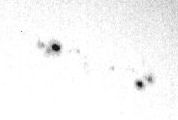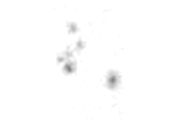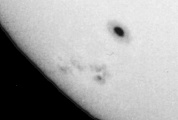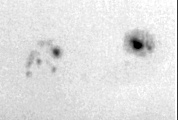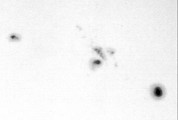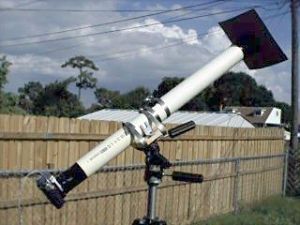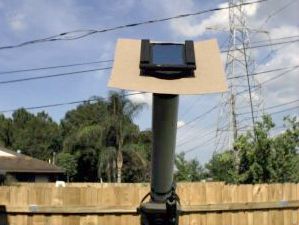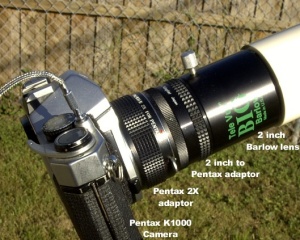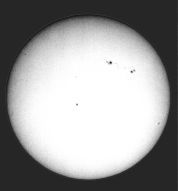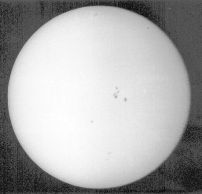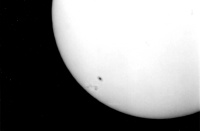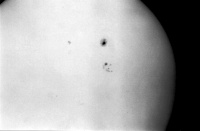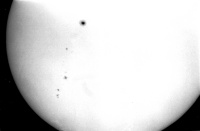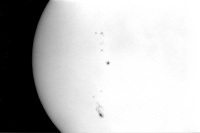Here is a photo of the home built solar telescope I used to take the above photos. It started life as
a cheap 70mm refractor. I removed the focuser assembly and added an extension tube made of PVC pipe.
A 2in barlow lens doubles the focal length of the scope from 700mm to 1400mm. A Pentax K1000 35mm
camera with a cable release is used to record the images.
The second photo shows the home built solar filter I made from a piece of flat, first surface mirror
I bought surplus for a buck. The Aluminum coating on the mirror doesn't quite block all the Sun's
light and lets just enough through to make nice photos. I put the piece of mirror in a wooden holder
made to slip onto the front of the scope. A cardboard square on the front shades the camera and keeps
me from having to squint into the sun while aiming and focusing the camera.
The third photo shows a close up of the camera end. The black cylinder in front of the camera body
is a 2 inch 2X barlow lens used to double the focal length of the telescope. The barlow lens attaches
to the camera body with a T-ring adaptor. The barlow lens then is friction fit into the piece of PVC
pipe serving as an extension tube. Focusing is accomplished by sliding the PVC extension tube in and
out of the telescope tube and then clamping it tight when focus is found.
The fourth photo shows how the whole assembly is mounted on my photographic tripod in a quick and
dirty saddle I made from a piece of scrap wood, some Aluminum angle and some hose clamps. It's kind
of ugly, but it works. Maybe someday I'll make a neater saddle. The other two hose clamps and the
silver knob above them are the clamping mechanism that allows me to lock down the PVC extension tube
once focus is found.
My first attempts at photographing the
sun were spoiled by poor contrast. I quickly determined that the un blackened inside of the refractor
tube and the PVC extension tube was causing horrible internal reflections. And worse yet, the PVC pipe
was translucent and allowed much light to pass right through. Painting the insides of the long narrow
tubes presented a problem, so I decided to roll up black poster paper into a cylinder and insert it
into the scope. This worked wonders and I am now getting reasonably good photos.
UPDATE! I have modified the camera by adding a second 2X adaptor. While rummaging
around in my camera bag I found my old Pentax 2X adaptor. I slipped it in between the T-ring adaptor
and the camera. This setup not only doubles the magnification, but also seems to increase the
contrast and produce better photos.
